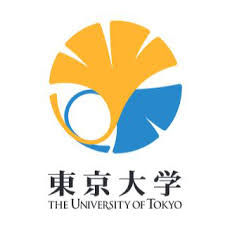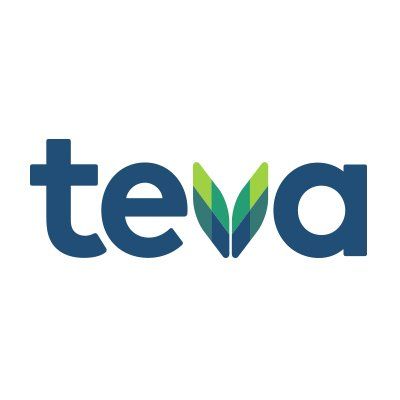预约演示
更新于:2025-09-09

University of Tokyo
更新于:2025-09-09
概览
标签
感染
肿瘤
其他疾病
小分子化药
寡核苷酸
合成多肽
疾病领域得分
一眼洞穿机构专注的疾病领域
暂无数据
技术平台
公司药物应用最多的技术
暂无数据
靶点
公司最常开发的靶点
暂无数据
| 排名前五的药物类型 | 数量 |
|---|---|
| 小分子化药 | 12 |
| 合成多肽 | 4 |
| 预防性疫苗 | 4 |
| 单克隆抗体 | 4 |
| 化学药 | 3 |
关联
41
项与 University of Tokyo 相关的药物作用机制 β-galactosidase替代物 [+2] |
非在研适应症 |
最高研发阶段批准上市 |
首次获批国家/地区 日本 |
首次获批日期2021-06-11 |
靶点 |
作用机制 ALDH2抑制剂 |
非在研适应症 |
最高研发阶段批准上市 |
首次获批国家/地区 美国 [+1] |
首次获批日期1951-08-28 |
靶点- |
作用机制- |
在研适应症 |
非在研适应症- |
最高研发阶段临床3期 |
首次获批国家/地区- |
首次获批日期- |
603
项与 University of Tokyo 相关的临床试验NCT07106346
Encapsulation-oriented Versus Timing-oriented Strategies for the Timing of Endoscopic Ultrasound-guided Drainage in Necrotizing Pancreatitis After Acute Pancreatitis: A Multicenter Randomized Controlled Trial (WONDER-03)
This multicenter, randomized controlled trial (WONDER-03 study) investigates the optimal timing for endoscopic ultrasound (EUS)-guided drainage in patients with necrotizing pancreatitis. Although current guidelines recommend delaying drainage until at least four weeks after the onset of acute pancreatitis to allow for encapsulation of necrosis, recent observational data suggest that the degree of encapsulation itself may more strongly influence treatment success and safety. In this trial, patients are randomly assigned to one of two groups: an encapsulation-oriented group, in which EUS-guided drainage is performed when imaging confirms ≥80% encapsulation of the necrotic collection with symptoms, and a timing-oriented group, in which drainage is performed at four to five weeks after disease onset, regardless of encapsulation status. The primary endpoint is clinical success within 180 days, defined as both radiologic resolution of necrosis and improvement in symptoms. Secondary endpoints include adverse event rates, recurrence of fluid collections, technical and clinical success rates, and healthcare resource use. This study aims to determine whether a strategy based on encapsulation leads to better clinical outcomes than the conventional time-based approach and may help establish a new evidence-based treatment algorithm for necrotizing pancreatitis.
开始日期2025-08-05 |
申办/合作机构  University of Tokyo University of Tokyo [+1] |
NCT06629844
Education Program for Enhancing Attitude Toward People Living with Dementia Among Healthcare Students Using Virtual Reality: Pilot Study
This quasi-experimental study focuses on Indonesian nursing students and aims to examine the effectiveness of virtual reality (VR) dementia educational programs. The study addresses the following research questions:
1. What is the current state of knowledge and awareness about dementia among participants before engaging in a VR dementia education program?
2. What is the effect of a VR dementia education program on improving participants' attitude, knowledge, and intention to help toward people living with dementia, and how are participants satisfied with the VR dementia education program? Participants will voluntarily join a 120-minute class education program, with each participant attending only once. The program, integrated into the faculty's dementia-related courses, will be structured around a series of components, including introduction, pre-program questionnaire, lecture, bad drama (unfriendly communication), bad version of VR, discussion, Lecture (about dementia), good VR, good drama, Lecture, N-impro, post-program questionnaire, and conclusion.
The VR education program will be included in dementia-related courses in the faculty of nursing.
1. What is the current state of knowledge and awareness about dementia among participants before engaging in a VR dementia education program?
2. What is the effect of a VR dementia education program on improving participants' attitude, knowledge, and intention to help toward people living with dementia, and how are participants satisfied with the VR dementia education program? Participants will voluntarily join a 120-minute class education program, with each participant attending only once. The program, integrated into the faculty's dementia-related courses, will be structured around a series of components, including introduction, pre-program questionnaire, lecture, bad drama (unfriendly communication), bad version of VR, discussion, Lecture (about dementia), good VR, good drama, Lecture, N-impro, post-program questionnaire, and conclusion.
The VR education program will be included in dementia-related courses in the faculty of nursing.
开始日期2024-10-14 |
申办/合作机构 |
JPRN-UMIN000054989
The impact of visualizing diet quality on dietary habit of university students - Effects of visualizing diet quality
开始日期2024-07-22 |
100 项与 University of Tokyo 相关的临床结果
登录后查看更多信息
0 项与 University of Tokyo 相关的专利(医药)
登录后查看更多信息
174,826
项与 University of Tokyo 相关的文献(医药)2025-12-31·Plant Signaling & Behavior
Determination of the phloem transport pathways and destination of photosynthates in soybean using autoradiography and fluorescent tracer imaging
Article
作者: Nakanishi, Tomoko M. ; Kurita, Yuko ; Tanoi, Keitaro ; Kaiho-Soma, Ai ; Kobayashi, Natsuko I.
Vascular tissues transport water and nutrients in plants, with the phloem distributing photosynthates from source to sink. The direction of phloem transport is determined by the positional relationship between sources and sinks and by vascular connections. Although aspects of phloem transport have been studied, a comprehensive understanding remains lacking. Here, we used soybean as a model system to investigate the translocation pathways and destinations of photosynthates using autoradiography with ¹⁴C-labeled sucrose and fluorescent imaging with carboxyfluorescein (CF), a known phloem tracer. Soybean exhibits simple phyllotaxy, with alternate trifoliate leaves arranged oppositely along the stem. Applying ¹⁴C-sucrose to mature leaves revealed that young developing leaves received photosynthates from source leaves on both sides of the stem. To visualize pathways, ¹⁴C-sucrose and carboxyfluorescein diacetate (CFDA) were applied to sequential source leaves. Signals from ¹⁴C and CF in the stem's vascular bundles showed no overlap, indicating distinct transport pathways. Additionally, when ¹⁴C-sucrose was applied separately to the left and right halves of a single mature leaf, it was followed corresponding sides to the sink leaves. These findings demonstrate that photosynthates are delivered to sink tissues via multiple, well-compartmentalized phloem pathways, providing new insight into the spatial organization of phloem transport.
2025-11-01·INTERNATIONAL JOURNAL OF CARDIOLOGY
Reply to: Letter to the editor: Prediction of adverse cardiovascular events in children using artificial intelligence-based electrocardiogram
Letter
作者: Inuzuka, Ryo ; Nogimori, Yoshitsugu
2025-11-01·ARCHIVES OF GERONTOLOGY AND GERIATRICS
Prognostic value of low estimated appendicular skeletal muscle mass in hospitalized older adults: A multicenter prospective observational study
Article
作者: Maeda, Keisuke ; Takeya, Yasushi ; Miyahara, Shuzo ; Nagae, Masaaki ; Nakashima, Hirotaka ; Umeda-Kameyama, Yumi ; Umegaki, Hiroyuki ; Satake, Shosuke
BACKGROUND:
Muscle mass assessment is essential for diagnosing sarcopenia and malnutrition. Various equations for estimating appendicular skeletal muscle mass (ASM) exist. Among these, equations based on basic clinical variables-age, sex, height, and weight-are potentially applicable to a broad range of patients. This study aimed to examine the validity of multiple ASM estimation equations in hospitalized older patients by investigating their associations with adverse outcomes, including mortality and functional decline.
METHODS:
This study used data from the Japan Hospital Acquired Complications project, a multicenter observational study, and included patients aged ≥65 years. ASM was estimated at admission using four previously reported equations. The appendicular skeletal muscle mass index (ASMI) was calculated and classified as low based on predefined cut-off values. Multivariable logistic regression was used to assess association between low ASMI, in-hospital or 3-month post-discharge mortality, and in-hospital Clinical Frailty Scale (CFS) worsening.
RESULTS:
A total of 1012 patients (mean age 83.9 ± 6.6 years; 57.4 % female) were analyzed. During hospitalization or within three months after discharge, 109 patients died. Low ASMI, as defined by several equations, was significantly associated with this mortality after adjusting for confounders. Additionally, low ASMI was significantly associated with in-hospital CFS worsening (n = 175), across all equations.
CONCLUSIONS:
Estimated ASM based on clinical information was associated with mortality and worsening frailty. These simple equations are widely applicable for assessing muscle mass and may contribute to facilitating the diagnosis of sarcopenia and malnutrition.
306
项与 University of Tokyo 相关的新闻(医药)2025-08-26
·今日头条
一项针对日本人群的大规模全基因组测序(WGS)研究近日在《细胞·基因组学》(Cell Genomics)发表,首次系统揭示了罕见遗传变异(RVs)和结构变异(SVs)在银屑病(俗称“牛皮癣”)发病中的关键作用,并锁定了一个全新的风险基因CERCAM。这项由东京大学、日本理化学研究所等机构联合开展的研究,为理解银屑病的复杂遗传机制提供了突破性视角。
背景:银屑病的遗传谜题与研究空白
银屑病是一种常见的慢性免疫介导性皮肤病,全球患病率约2%-4%,但亚洲人群(如日本)患病率仅为0.1%-0.3%。
其发病与遗传高度相关,既往全基因组关联研究(GWAS)多聚焦欧洲人群的常见单核苷酸变异(SNVs),但这类变异仅能解释约30%的疾病遗传风险。近年来,科学家逐渐意识到,罕见变异(发生频率<0.5%)和结构变异(如大段DNA插入、缺失或倒置,长度>50bp)可能是未被充分挖掘的“遗传拼图”。
欧洲人群的研究无法完全代表亚洲人群的遗传背景。例如,欧洲人群中HLA-C∗06:02等位基因携带者占银屑病患者的近半数,但在日本人群中这一比例仅约5%。这意味着,亚洲人群的银屑病遗传驱动因素可能截然不同。
研究突破:5383例样本揭示罕见与结构变异的关键作用
研究团队收集了1415名日本银屑病患者(包括511例银屑病关节炎患者)和3968名健康对照的血液样本,进行了深度全基因组测序(平均覆盖度18.3×)。
通过对数据的系统分析,研究取得三大核心发现:
1.结构变异(SVs):一个3.3kb缺失扰乱皮肤特异性增强子
研究首次在全基因组范围内筛选出与银屑病显著相关的结构变异。其中,位于IFNLR1基因(编码Ⅲ型干扰素受体)附近的3.3kb缺失变异(chr1:24520347-24523674:DEL)尤为关键。该变异位于皮肤上皮细胞特异性的增强子区域(通过组蛋白修饰标记H3K4me1和H3K27ac验证),通过下调IFNLR1表达,可能削弱皮肤对病毒的炎症反应,从而降低银屑病风险。
值得注意的是,这一变异与欧洲人群GWAS中IFNLR1位点的领先SNP(rs59960858)高度连锁(r²=0.99),且通过长读长测序验证了其基因型准确性,排除了技术误差干扰。
2.罕见变异(RVs):CERCAM成新风险基因
通过基因水平的罕见变异聚合分析(涵盖功能丧失型变异、错义变异等),研究识别出两个显著关联基因:IFIH1(p=9.8×10⁻⁶)和CERCAM(p=4.1×10⁻⁷)。其中,CERCAM(脑毛细血管内皮细胞黏附分子)此前未被报道与银屑病相关,其关联信号主要由日本人群特有的罕见变异驱动(如42%的变异未在欧美数据库gnomAD中记录)。
进一步功能验证显示,CERCAM在皮肤成纤维细胞中特异性高表达(通过单细胞RNA测序和空间转录组学确认)。在小鼠模型中,敲除CERCAM的小鼠经咪喹莫特(银屑病诱导剂)处理后,皮肤炎症显著加重:表皮增厚、促炎因子(IL-6、IL-17A、IL-23)表达升高,且真皮层T细胞浸润增加(尤其是产生IL-17的T细胞亚群)。
这直接证实了CERCAM通过调控T细胞留存和活化参与银屑病发病。
3.罕见致病基因IL36RN与常见银屑病的关联
研究还发现,罕见孟德尔病基因IL36RN(编码IL-36受体拮抗剂,突变可导致泛发性脓疱型银屑病GPP)与常见银屑病存在关联。尽管研究排除了GPP患者,但IL36RN的罕见有害变异仍可能通过剂量效应影响普通银屑病的严重程度。这一发现提示,针对IL-36通路的疗法可能不仅适用于罕见重症银屑病,也可能惠及其他类型患者。
意义与展望:推动银屑病精准治疗
这项研究首次在日本人群中系统解析了罕见变异和结构变异的贡献,为银屑病的遗传图谱补上了重要一块。CERCAM的发现尤其令人兴奋——它不仅是一个新的风险基因,更提示皮肤成纤维细胞通过调控T细胞行为参与炎症,这为开发靶向成纤维细胞-免疫细胞互作的疗法提供了新靶点。
研究团队强调,尽管样本集中于日本人群,但其方法学(如WGS结合SV和RV分析)可推广至其他族群。未来,他们计划扩大样本量,探索CERCAM的具体分子机制,并评估其作为生物标志物的潜力。
从“常见变异”到“罕见与结构变异”,从“欧洲人群”到“亚洲人群”,这项研究深化了对银屑病遗传基础的理解,彰显了多样性人群研究对攻克复杂疾病的关键价值。随着基因组学技术的普及,为精准医疗开辟新路径。
原文链接:https://www.cell.com/cell-reports-medicine/fulltext/S2666-3791(25)00382-9
【关于投稿】
转化医学网(360zhyx.com)是转化医学核心门户,旨在推动基础研究、临床诊疗和产业的发展,核心内容涵盖组学、检验、免疫、肿瘤、心血管、糖尿病等。如您有最新的研究内容发表,欢迎联系我们进行免费报道(公众号菜单栏-在线客服联系),我们的理念:内容创造价值,转化铸就未来!
转化医学网(360zhyx.com)发布的文章旨在介绍前沿医学研究进展,不能作为治疗方案使用;如需获得健康指导,请至正规医院就诊。
责任声明:本稿件如有错误之处,敬请联系转化医学网客服进行修改事宜!
微信号:zhuanhuayixue
热门推荐活动 点击免费报名
点击对应文字 查看详情
临床结果
2025-08-18
·求实药社
中枢神经系统(CNS)一直是医学研发中最具挑战性的领域之一。从阿尔茨海默病到精神分裂症,从神经退行性疾病到罕见脑病,CNS 疾病不仅深刻影响患者生活质量,也持续推动全球医疗科技的创新突破。
为便于行业观察与交流,本文汇总整理了63位深耕CNS领域的企业创始人及CEO(排名不分先后)。所列信息来自公司官网及公开资料,如有更新滞后,敬请谅解。【上篇】见文末
33、刘毅,复星医药,首席执行官兼总裁
刘毅先生,1975年8月出生,中国国籍。刘毅先生于2015年11月加入本集团,现任本公司首席执行官兼总裁、医疗器械事业部董事长兼首席执行官、医学诊断事业部董事长;并于本公司若干控股子公司担任董事、管理层职务,其中包括于香港联合交易所有限公司上市公司Sisram Medical Ltd(股份代码:01696)任执行董事、董事会主席。刘毅先生拥有北京理工大学工学学士学位、北京大学管理学硕士学位及北京航空航天大学生物医学工程博士学位。
34、龙爱晶,翼思生物, CEO
• 25年跨国药企管理经验
• 前赛诺菲中国区中枢神经(CNS)事业部总经理,创建中国外资药企最大 CNS 事业部
• 曾任职于诺华、百时美施贵宝、惠氏等一线跨国药企,覆盖市场营销、医学事务及事业部管理等全商业化管理经验
• 北京协和医科大学医学博士、中欧国际工商学院管理学硕士
35、陆英明,辉大基因,首席执行官及联合创始人
拥有逾30年的全球药物开发、基因/细胞治疗药物、生物药物和罕见病相关经验,曾服务于多家知名生物技术/生物制药公司,包括上海复宏汉霖、Spark Therapeutics(被罗氏收购)、百健(Biogen)和拜耳医药保健(Bayer)等。
在药品注册领域拥有丰富实践经验,在北美/南美、欧洲、印度、南非、巴西、阿根廷和亚太地区,成功提交超过250份IND、NDA/BLA和MAA,先后领导或参与了21个获批产品从临床开发到产品批准上市全过程,成绩斐然。
已在广获认可的同行评审期刊上发表了100多篇学术论文及书籍章节,包括《新英格兰医学杂志》、《自然医学》、《自然》、《细胞》、《科学》和《血液》。
拥有美国哈佛商学院MBA学位,并于加州大学旧金山分校医学院获得神经科学博士学位和美国临床研究认证资质。
36、吕佳声,润佳医药,创始人、CEO
近15年的药物研究经验,主导了多个1类创新药项目,系数个临床药物化合物发明人。
其中,阿尔兹海默症的新药项目处于美国三期临床研究中(孤儿药、快速审批)。
现兼任复旦大学生命科学院博士生导师、中国科学院深圳先进技术研究院研究员。
37、孟夏,艾码生物,CEO兼联合创始人
孟夏博士毕业于巴黎第六大学,在法国国立医学科学院(法国NIH)和居里研究所具有10+年基础研究经历,在Clinical Cancer Research、PNAS、PLoS One等国际著名学术杂志发表30余篇文章。孟夏博士还具有20余年生物技术研发、市场、商务和管理工作经历,多年从事生物创新药的开发工作,曾领导团队完成3个病毒为载体的一类创新药的研发,并获批进入临床。孟夏博士曾任在多个跨国企业任中国区总经理、首席运营官、董事总经理等高管职位。
38、莫丁丁,北京光脑生物科技有限公司,创始人&CEO
北京光脑生物科技有限公司(简称“光脑生物”)创始人莫丁丁是德国明斯特大学生物学博士、德国马克斯·普朗克衰老生物学研究所博士后,获评北京市海外高层次人才、深圳市海外高层次人才(孔雀计划)。
39、任晋生,江苏先声药业有限公司,董事长兼首席执行官
任晋生先生为先声药业创始人,现任集团董事长兼首席执行官,负责公司整体战略、业务运营,作出本集团的重大业务及运营决策。
任晋生先生1982年毕业于南京中医药大学,后于南京师范大学获得工商管理硕士学位,获江苏省人力资源与社会保障厅认证为研究员(自然科研系列)以及高级经济师。
国家科技进步二等奖获得者,现任中国医药创新促进会副会长、江苏省总商会副会长、南京市工商联副主席。
40、申华琼,纽欧申医药,创始人兼CEO
申华琼博士是美国精神病学和神经病学委员会认证的医生。她拥有印第安纳大学医学院生命科学博士学位,在那里她还完成了临床住院医师培训,以及内分泌学、精神药理学和临床药理学的三个博士后培训。进入工业界后,她先后陆续在美国礼来公司、惠氏公司和辉瑞公司担任中枢神经系统药物开发的临床项目负责人,并领导了让中国加入全球临床研发的倡导和实施。
申华琼博士于2013年作为首席医学官加入恒瑞医药,建立创新药临床团队,成功帮助公司走向国际化。她随后又加入杨森制药,担任中国药物开发总负责。她于2017年加入天境生物任职至首席执行官,帮助打造研发团队和临床管线,为公司在纳斯达克成功IPO及其成长做出了重要贡献,与艾伯维的成功合作项目尤其令人瞩目。2022年1月,申华琼博士创办纽欧申医药有限公司,专注于CNS创新药研发。
申华琼博士同时还是北京大学客座教授,以及印第安纳大学医学院兼职教授。在她的职业生涯中获得了众多的荣誉与认可,包括近期的业界权威媒体Endpoints News的2021年生物制药研发领域的20位杰出女性之一,福布斯2021年中国科技领域女性 50 强, 2022年百华协会年度唯一的女性领导者奖。
41、史艺宾,大睿生物,CEO、联合创始人
Stella Shi is founder, Chief Executive Officer and chairs the board of Rona Therapeutics since company inception in 2021 bringing ~15 years of biopharmaceutical industry and venture capital experience. Prior to founding Rona Therapeutics, Stella was managing director in Lilly Asia Ventures (LAV) from 2015 with proven track records with various venture creation and investment deals, including YHL Diagnostics (688575.SH), InventisBio (688382.SH), Keymed Bio (2162.HK), New Horizon Health (6606.HK), Burning Rock (BNR.N), Revolution Medicine (RVMD.N), Xihua Scientific Co, Singleron Biotechnologies, Pinnacles Dx, FutureGen, Regor Therapeutics, etc. Prior to LAV, Stella was new product planning lead for oncology at Roche overseeing development strategy for early stage pipeline products in China and Asia Pacific region. Previously, Stella worked with ZS Associates, a worldwide management consulting firm in healthcare industry, as a consultant. Stella holds a B.S degree in molecular biology from Fudan University.
42、舒东旭,舶望制药,董事长,CEO
舒东旭博士是舶望制药的联合创始人。舒博士曾任Arrowhead Pharmaceuticals高级科学家,专注于肝外递送平台的开发,其中一些已成功应用于临床研究。在加入Arrowhead之前,舒博士在美国西北大学进行了博士后研究。舒博士是北京大学化学系理学学士,美国威斯康星麦迪逊分校有机化学博士。
43、谭骏,安域生物,联合创始人/董事长/首席执行官CEO/医学博士/首席科学家
复旦大学人类遗传学理学硕士,第三军医大学医学博士。2003年获中国国家自然科学基金海外优秀(杰出)青年科学家基金,2007年被授予Robert A. Silver发育神经生物学讲席教授(Robert A. Silver Endowed Chair),终身教授。在国际权威杂志发表原创学术论文约170篇(SCI),如 《SCIENCE》、《Nature Neuroscience》、《Nature Communications》、《Nature Medicine》以及获得专利授权23项。主持和参与美国国立卫生研究院(NIH)等科研课题30余项。
44、王冰,麦科奥特,创始人、董事长兼总裁
曾任西安交通大学教授
生物药缓释关键技术研发中心主任和创始人
重大新药创制专项、国家自然科学基金评审专家
中国生物制品学杂志编委会委员
中国药理学会心血管分会委员
45、王海盛,思合基因,创始人兼CEO
北京大学药物化学博士,师从中国寡核酸化学泰斗张礼和院士 国家级高层次人才“万人计划”科技领军(2024) 原哈药集团(600664)研发总裁;曾在保诺科技、百济神州、扬子江药业集团和哈药集团从事近20年创新药物研发和战略管理,主导获10余项国际创新药物批件 主持/参与多项创新药物的项目,参与中国首款获FDA批准新药的研发工作 获一类和三类新药临床批件及生产批件十余个; 主持3项核酸药物临床前研究项目,曾负责科技部“十二五”重大新药创制项目。
46、王静,Myrobalan Therapeutics,联合创始人兼首席执行官
自 2006 年以来,涵盖小分子药物开发从发现到商业化的所有阶段的行业经验。
在 Curis、TESARO/GSK 和 Constellation 担任过各种研发领导职务。
领导 ZEJULA™ 的 NDA/CDx 联合申报、生命周期管理和商业化的转化开发。
哈佛医学院博士,论文研究重点是神经退行性变。
47、王青松,清普生物,创始人,CEO
中国药科大学博士,复旦大学硕士
近20年新药研发管理和业务拓展经验,曾分管BD、临床、制剂业务
48、王晓东,维泰瑞隆,创始人、董事长
王晓东博士是维泰瑞隆创始人兼董事长。他还共同创立了百济神州(纳斯达克股票代码:BGNE),是百济神州的董事会成员,并担任科学顾问委员会主席。王晓东博士是北京生命科学研究所(NIBS)的创始所长,自2010年以来一直担任该研究所所长和研究员。
此前,他于1997年至2010年期间担任霍华德·休斯医学研究所的研究员,并于2001年至2010年在美国德克萨斯大学西南医学中心担任生物医学科学杰出首席教授。
王晓东博士因其科学成就获得了多个奖项,包括美国化学学会颁发的礼来生物化学奖,美国生物化学和分子生物学学会授予的ASBMB-Merck奖,美国国家科学院的分子生物学奖和理查德·朗斯伯里奖,美国癌症研究协会颁发的杰出成就奖,以及邵逸夫生命科学与医学奖等。
王晓东博士拥有美国德克萨斯大学西南医学中心生物化学博士学位和北京师范大学生物系学士学位。王晓东博士于2004年当选美国国家科学院院士,2013年当选中国科学院外籍院士。
49、王友鑫,上海璃道医药科技有限公司,董事长、联合创始人
王友鑫,博士,现任上海璃道医药科技有限公司董事长、首席执行官。上海市青年创业英才、上海市扬帆计划人才、闵行区青年创业英才、华东理工大学药学硕士企业导师。
2011-2016年,在华东理工大学攻读药学博士学位。博士期间以第一作者身份在国际著名期刊Nat Chem Biol发表论文1篇,在药物化学一流期刊J. Med. Chem.发表论文2篇,申请发明专利4项。同时,项目研究成果成功实现产业转化,转让给国内上市医药集团进行进一步开发(转让费1500万)。
2016年,作为联合创始人成立上海璃道医药科技有限公司。公司成立后,作为公司研发负责人已经成功推动1个项目完成pre-IND申报,1个项目进入临床前研究阶段,多个项目确定PCC化合物,在新药研发方面积累了丰富的经验。以第一发明人的身份申请了3项PCT国际专利,9项中国发明专利,其中有5项已经授权;作为项目参与者在cell discovery发表论文1篇。
先后获得上海市优秀毕业生、华东理工大学优秀学位论文奖、上海市新药设计重点实验室学术论文奖和“阿达玛斯”学术论文奖等荣誉。2018年入选“创新行动计划”上海市青年科技英才扬帆计划资助人员名单;作为项目负责人两次获得上海市科技型中小企业技术创新资金资助,且入围了第九届中国创新创业大赛国赛阶段;2019年在中共上海市委党校参加了上海市重点培育创业企业创始人培训班学习,并取得结业证书;2020年先后被认定为闵行区青年创业英才和上海市青年创业英才。
50、徐景宏,昌郁医药,董事长&CEO
哈佛医学院神经病学和眼科教授。
波士顿儿童医院病毒核心主任。
轴突再生、神经变性和髓鞘再生研究的世界领导者。
美国国家医学科学院 (NAM) 院士。
克林根斯坦神经科学研究员、约翰默克学者、麦克奈特学者、里夫-欧文研究奖章获得者。
多伦多大学博士,加州大学旧金山分校 Marc Tessier-Lavigne 博士后研究。
Rugen 联合创始人(项目授权给 McQuade 战略研究与发展中心)。
51、颜光美,广州市赛普特医药科技有限公司,创始人、首席战略官;原中山大学副校长
颜光美博士,药理学家,曾任中山医科大学副校长、中山大学副校长、党委书记。国家杰出青年基金和国务院特殊津贴获得者,教育部科学技术委员会学部委员。
现任中山大学中山医学院药理学教授,博士生导师,教育部规划教材《药理学》主编。科研领域为抗脑卒中、抗癌症创新药物的研究和临床转化。
52、颜毅,青岛普美圣医药科技有限公司,联合创始人及CEO
北京大学生命科学学院生物技术系学士
加拿大英属哥伦比亚大学医学院神经科学系硕士
主要研究领域为神经系统突触可塑性的产生机制以及相关神经系统疾病的发病机理。对Akt在AMPA受体上膜以及由此导致的长 时程增强效应(LTP)中的作用进行了深入研究,揭示出可能的Akt作用机制,为相关疾病治疗和药物开发提供了新的靶点和方向。
此外,对神经肽及其受体在中枢神经系统中介导突触可塑性和痛敏反应的作用机制进行研究,为进一步阐明疼痛的产生机理揭示 了可能的方向。 除了多年的科学研究经历,还拥有成功的企业管理和运作经验,处事严谨负责,作风干练,善于沟通;在团队 建设及企业文化建设等方面具有丰富经验。
53、杨士豹,南京宁丹新药技术有限公司,联合创始人
国家1类新药先必新®的发明人及项目负责人
曾任先声药业项目总监,先后主持7个新药品种的研发,多个产品已上市销售
创办多家新药研发公司,多个品种已在国内外获得批件
54、俞磊,上海优卡迪生物医药科技有限公司,CEO&首席科学家
俞磊博士现为上海优卡迪生物医药技术公司创始人;中国外籍专家、华师大生物医学工程和技术研究所创始人和所长;国际人类基因变异组项目中国区工作委员会委员;中国研究型学会细胞治疗专业委员会会员;上海市健康科技协会免疫大健康专业委员会主任;上海药剂专委会委员;上海医用材料专委会会员。
主要研究方向为基因治疗和细胞治疗、靶向药物传递系统。30多年基因/细胞疗法研究开发经验、医、制药和和20多年年美国和国内的企业管理和运行经验。于2015年初成立上海优卡迪,专注CAR-T技术创新和免疫治疗产品开发,是国内CAR-T技术创新的领军企业,目前已经在国内外成功开展了1000多例的血液肿瘤和实体瘤的CAR-T治疗临床IIT研究。
55、张诚,祐儿医药,CEO
张诚先生是祐儿医药的创始人,也是商业化和产品引进方面的资深行业领袖,在中国医疗行业拥有超过20年的管理经验。
在创立祐儿医药之前,张诚先生曾担任先声药业集团首席运营官,负责集团商业化团队的全面管理,集团数字化建设和公共事务,并作为主要成员参与领导了公司IPO;此前,曾服务于全球知名跨国制药企业默沙东,担任中国董事总经理,建立并领导了默沙东在中国的多个职能部门,取得了业务的高速增长。
拥有南京大学理学学士及EMBA学位。
56、张金华,南京驯鹿医疗,联合创始人&CEO
张金华女士毕业于东北财经大学,法学硕士,资深证券律师,曾就职于投资银行和行业领先的证券律师事务所。作为项目主导人,兼任财务顾问和律师双重身份,曾主办几十家中国企业的上市和并购重组项目,包括国内A股改制上市、香港上市、美国纳斯达克上市、加拿大多伦多交易所上市项目。张金华女士自2003年后主办过近20个上市公司的并购重组业务,累计协助几十家企业完成境内外上市。2015年作为天使投资人投资了早期从事CAR-T研发的公司,并出任董事。
2017年,张金华女士创办驯鹿生物,以“专注创新生物疗法,为患者带来治愈的希望”为使命,致力于解决中国乃至全球患者未被满足的临床需求。在张金华女士的带领下,驯鹿生物已发展成为细胞与基因治疗领域的行业领军企业,具备从早期药物发现、临床研发、注册申报到商业化的全流程能力,同时公司还拥有业界一流的全人源抗体库平台,并于2023年成功上市了明星CAR-T产品福可苏®。
入选2024“中国新药开拓奖20年·20人”;
入选2024年《财富》中国最具影响力的商界女性榜单—未来榜。
57、张明奎,苏州新旭医药有限公司,创始人&CEO
新旭生技首席执行官
MD安德森癌症中心神经退行性疾病联盟,休斯顿
葛兰素史克副总监,上海
默克公司高级研究生物学家,波士顿
西北大学和哥伦比亚大学神经生理学博士后
波士顿大学药理学和神经科学博士
台湾大学化学学士
专业领域:神经退行性疾病;突触功能;新型生物标志物发现
58、张彦丰,AlaMab Therapeutics,共同创始人、总裁
张彦丰博士于Michigan State University 获得遗传学/生物化学博士学位,并相继在Pacific Northwest National Laboratory和University of Texas Health Science Center at San Antonio进行博士后研究。在蛋白质结构和功能、抗体生产和抗体药开发方面有十多年的工业和学术界经验。在加入AlaMab之前,曾担任美国上市药企XBiotech公司抗体开发和生产工艺总监。 张博士主要负责AlaMab的整体运营,临床前药物开发,包括抗体发现和成药性研究、生产和工艺开发、药理药效和毒理学研究等,并协调和管理相应的临床试验。
59、钟卫,威尚(上海)生物医药有限公司, 创始人、CEO
20年以上新型药物分子研发经验
跨国药企项目负责人,领导团队新药研发
>30多篇文章发表于高影响杂志,会议和书
最为》7家高影响杂志的审稿人
是多个著名科学团的会员(ACS, SigmaXi, AACR, SDDA, SNO)
60、钟毅,北京卓凯生物,董事长、联合创始人,清华大学教授
清华大学教授
曾在冷泉港实验室担任教授
神经生物学家
30年的学习记忆研究经验
发现主动遗忘机制
61、周静敏,珠海鲸奇生物公司,联合创始人及CEO
周静敏,北京大学(前北医)本科,日本筑波大学博士,东京大学研究员,宾大Wistar研究所博后,在费城儿童医院开始参与细胞与基因治疗的临床试验。进入工业界后先后在罗氏礼来等药企担任高级研发管理工作,是美国药典委员会基因治疗专家组成员。
62、周显波,阿斯诺来(上海)医药科技有限公司,创始人&CEO
致力于阿尔茨海默和认知障碍的精准早发现和有效疗法的研发和开发。30+年生物医药研发,运营管理和多次创业经验。曾参与默沙东全球首创HDAC新药伏立诺他(Zolinza)的研发;领导美国达特神经科学公司药物研发部3年内为公司贡献3条CNS临床管线;创建昆明圣加南公司,领导开发数字化认知评估MemTrax产品;联合创建中泽医药开曼公司;创建阿斯诺来(上海)医药公司,全面负责阿斯诺来管线搭建和运营。
63、朱振东,科辉智药,创始人、董事长
武汉工程大学学士,北京大学硕士,瑞士弗里堡大学博士,美国俄交俄州立大学/乔治敦大学博士后研究员。
任新基首席研究员(PrincipalInvestigator)、AvilaTherapeutics 首席研究员(PrincipalInvestigator)、辉瑞制药首席科学家(Principal Scientist)。
拥有逾20年计算机化学研发领域经验,擅长人工智能及云平台技术开发,擅长小分子化合物药物组合库设计,深度参与多个新药研发项目并成功进入临床阶段。
▲年度医药人盘点:63位CNS领域创始人&CEO盘点(上篇)
往期推荐
RECOMMEND
年度医药人盘点:40位ADC药企CEO盘点
年度盘点:30位小核酸领域CEO资料整理!
年度医药人盘点:70位小分子创新药企CEO盘点
联系我们
ICNS 2025
展位火热预定中!
扫码立即咨询
电话:13816031174
(同微信)
赞助形式包括但不仅限于演讲席位、会场展位、会刊彩页、晚宴赞助、会议用品宣传等。
点击此处“阅读全文”咨询更多!
高管变更
2025-08-13
编者按:“2025 乳腺癌夏季论坛·北方沙龙”于2025年8月8-10日在山东青岛召开。沙龙秉承“学习吸收 、创新提高”理念,发扬“东南西北、古今中外、春夏秋冬、男女老少”传统,交流学术前沿进展,设置人工智能技术、医疗改革等话题。主题报告环节,上海市卫生和健康发展研究中心金春林主任带来了“创新药国谈准入与落地政策思考”报告,深度剖析当下政策。会后,肿瘤瞭望特邀金春林主任就创新药研发、医保谈判与落地政策等话题进行了进一步分享,为医疗改革与创新药发展提供新思路。
01
《肿瘤瞭望》:国家医保药品目录调整近日正式启动,其中为解决创新药支付难题,首次增设的商业健康保险创新药目录吸引了各界关注,那么对于我国创新药的研发和可及性现状,您有怎样的看法和评价?
金春林 主任
上海市卫生和健康发展研究中心
2015年,国家药监局正式启动审评审批制度改革。这一年具有里程碑意义,标志着我国医药产业正式踏上从仿制药向创新药转型的新征程,堪称我国创新药发展的元年。自2015年之后,国家出台了许多相关政策。也是从这一年开始,大量资金涌入医药领域,再加上众多海归人才回归,资本、政策与人才三重因素叠加,使得大量临床创新药研究管线在国内落地生根。
经过10多年的发展,我国创新药呈现井喷态势。特别是今年上半年,到7月份已有49个创新药获批,这一数量超过了去年全年的总数。从数量上看,我国今年创新药获批总数有可能超过美国。
近年来,我国创新药发展速度极快。近期,国家医保局连续召开了5次座谈会,旨在落实2024年中央政府针对生物医药产业推出的“全链条支持创新”的政策。“全链条支持创新”政策覆盖生物医药产业的各个环节:从研发端的创新激励,到药监部门审评审批流程的提速;从每年国家医保局国家医保药品谈判(国谈)政策的优化调整,到确保政策在医院落地见效的“最后一公里”畅通,再到资本市场的有力支持,形成了全方位、全链条助力生物医药产业蓬勃发展的强大合力。
然而,从总体上来看,生物医药产业新药的爆发与我国基本医保的支付能力之间可能存在一些结构性矛盾。所以国家医保局强调,今年要首次创立商业健康保险创新药目录,引入新的资金来源。对于老百姓需求较高但价格昂贵的药品,可通过商业保险这一“第二渠道”进行保障。这样做既有利于商保自身的发展,也有利于创新药开拓第二市场,还能让有支付能力的老百姓尽快获得更好的药品。
我认为这一系列政策的出台,对生物医药产业进一步发展环境的优化有很好的促进作用。
02
《肿瘤瞭望》:近年来我国创新药企大多希望通过医保谈判,扩大创新药物的市场空间,但我国医保体系又以保基本、惠民生为主要原则,常常要求药企以价换量。面对这种现状,您认为应如何在医保谈判中,做好“鼓励创新”和“惠民”的平衡?
金春林 主任
上海市卫生和健康发展研究中心
“鼓励创新”和“惠民”一直是医保努力的方向。我个人认为,二者平衡的本质在于医保资金的可持续发展。基本医保“保基本”的定位,决定了它无法对一些临床价值高、老百姓需要,但超出一定费用范围的药品进行保障。但我们国家医保局支持创新的决心非常大,近期也召开了相关会议,今后可能还会出台药品综合价值评价方案。
今后,药品能否纳入医保,将不再单单取决于其本身的价格,而是要开展综合评价,从社会价值、经济价值和医疗临床价值等多个维度进行考量,而非仅从一个维度评价,以试图找出真正具有创新性和临床价值的药品,将其纳入基本医保目录。
基本医保“保基本”的定位也让我们认识到,它不可能为了惠及民生,将所有创新药都纳入基本医保目录。因此,一些药品可以通过商业保险这一“第二渠道”进行保障。我们可以看到,包括“惠民保”在内的多家商保,会将一些确实有临床价值,但医保暂时负担不起的药品,通过商保途径来保障,以此加强产业发展。这样一来,一方面能充分发挥基本医保基金的战略性购买作用,以相对便宜或合适的价格买到疗效较好的药品;另一方面,也能为那些目前医保难以承担的药品开辟第二个渠道,让这些药品真正惠及老百姓。通过这样的努力,“鼓励创新”和“惠民”之间就能找到最大的平衡点,实现各方共赢。
03
《肿瘤瞭望》:在解决创新药支付问题、设立商保创新药目录等方面,国外是否有较为合适的经验可供我国借鉴?应如何结合我国实际情况和医保改革方向,找到“有中国特色”的解决方案?
金春林 主任
上海市卫生和健康发展研究中心
国外的一些经验,对我国商保创新药目录的设立有一定的借鉴意义。例如,美国采用PBM模式,即药品福利管理模式,对于一年内上市的新药,通过降价的方式将纳入商保目录;澳大利亚则通过PBS模式,也就是药品福利计划,对部分药品降价后纳入商品目录;德国采取商业保险和基本医保互补的模式,对于年治疗费用超过5万欧元的药品,纳入商保目录,而不纳入基本医保目录。我国现在强调多层次的医疗保障体系,即基本医保保基本、商保作为补充,个人账户、慈善捐赠救助作为辅助,各层次相互补充。目前,我们正在进一步逐步探索每种模式是如何更好地发挥作用的。
我认为我国基本医保和商保之间有很大的双向赋能空间。比如在数据赋能方面,商保带病体保险的发展以及商保对保险费率的计算,都需要大量现有数据支持。而基本医保拥有大量人群和数据,可以开放给商保利用。此外,基本医保具有较强的平台管理能力,例如个人账户投保商保,就利用了基本医保平台,这样既能节约商保管理费用,也能保障医保不被非法骗保。因此,商保和基本医保之间互相赋能的空间,还有很多可以拓展。
对于基本医保中一些费用较高的药品,我认为我们可以探索基本医保支付一部分,剩余部分由商业保险支付的合作支付模式。这种模式既不增加基本医保的负担,也有利于商保和整个产业的发展。另外,我认为我们要充分利用价值医疗的概念和真实世界数据。我们可以通过商保,利用真实世界数据来衡量其临床疗效是否达到预期。在续约时,甚至可以根据临床疗效进行价格的调整,不仅可以降价,也可以涨价。
此外,我们要做好医保药品目录的动态管理,现在大家关注的是药品进医保,但对于医保目录内原有的药品,如果与新药相比临床价值、性价比不高,应该将其移出目录。因为现在基本医保目录中已经有3159种药品,如果每年以新增100多个药品的速度纳入医保,目录过大将不利于管理。因此,建立新药替代老药、有进有出的机制十分必要。
总而言之,随着我国生物医药产业的发展,上游产品越来越多,下游如何将这些产品纳入医保、进入医院,让老百姓直接获益,二者间存在一定矛盾。国家对此也非常重视,我认为只有产品突破和支付突破双轮驱动,才能推动我国生物医药产业全链条联动,形成良好的生态。我相信,经过大家的共同努力,在不远的将来我国将出现世界级的医药创新公司。
金春林 主任
上海市卫生和健康发展研究中心(上海市医学科学技术情报研究所)主任
入选上海市领军人才、享受国务院政府特殊津贴、专业技术二级岗
东京大学博士、复旦大学和华中科技大学兼职教授、博导
2018年度全国十大最受关注医改专家
中国卫生经济学会常务理事
《健康发展与政策研究》杂志主编
《卫生经济研究》杂志社学术指导委员会主任委员
《中国卫生经济》杂志第七届编辑委员会副主任委员
《中国初级卫生保健》杂志第三届编辑委员会副主任委员
(来源:《肿瘤瞭望》编辑部)
声 明
凡署名原创的文章版权属《肿瘤瞭望》所有,欢迎分享、转载。本文仅供医疗卫生专业人士了解最新医药资讯参考使用,不代表本平台观点。该等信息不能以任何方式取代专业的医疗指导,也不应被视为诊疗建议,如果该信息被用于资讯以外的目的,本站及作者不承担相关责任。
申请上市引进/卖出
100 项与 University of Tokyo 相关的药物交易
登录后查看更多信息
100 项与 University of Tokyo 相关的转化医学
登录后查看更多信息
组织架构
使用我们的机构树数据加速您的研究。
登录
或

管线布局
2025年11月28日管线快照
管线布局中药物为当前组织机构及其子机构作为药物机构进行统计,早期临床1期并入临床1期,临床1/2期并入临床2期,临床2/3期并入临床3期
药物发现
10
24
临床前
临床1期
3
3
临床2期
临床3期
1
55
其他
登录后查看更多信息
当前项目
| 药物(靶点) | 适应症 | 全球最高研发状态 |
|---|---|---|
URLC10/CDCA1/KOC1 derived peptide vaccine(The University of Tokyo Hospital) | 食管癌 更多 | 临床3期 |
HSP105 peptide-pulsed dendritic cell product(MEDINET) | 肿瘤 更多 | 临床2期 |
双硫仑 ( ALDH2 ) | 进行性纤维化间质性肺病 更多 | 临床2期 |
IMSUT-MR1501 | 霍乱 更多 | 临床1期 |
MucoRice-CTB ( toxB ) | 霍乱 更多 | 临床1期 |
登录后查看更多信息
药物交易
使用我们的药物交易数据加速您的研究。
登录
或

转化医学
使用我们的转化医学数据加速您的研究。
登录
或

营收
使用 Synapse 探索超过 36 万个组织的财务状况。
登录
或

科研基金(NIH)
访问超过 200 万项资助和基金信息,以提升您的研究之旅。
登录
或

投资
深入了解从初创企业到成熟企业的最新公司投资动态。
登录
或

融资
发掘融资趋势以验证和推进您的投资机会。
登录
或

生物医药百科问答
全新生物医药AI Agent 覆盖科研全链路,让突破性发现快人一步
立即开始免费试用!
智慧芽新药情报库是智慧芽专为生命科学人士构建的基于AI的创新药情报平台,助您全方位提升您的研发与决策效率。
立即开始数据试用!
智慧芽新药库数据也通过智慧芽数据服务平台,以API或者数据包形式对外开放,助您更加充分利用智慧芽新药情报信息。
生物序列数据库
生物药研发创新
免费使用
化学结构数据库
小分子化药研发创新
免费使用


